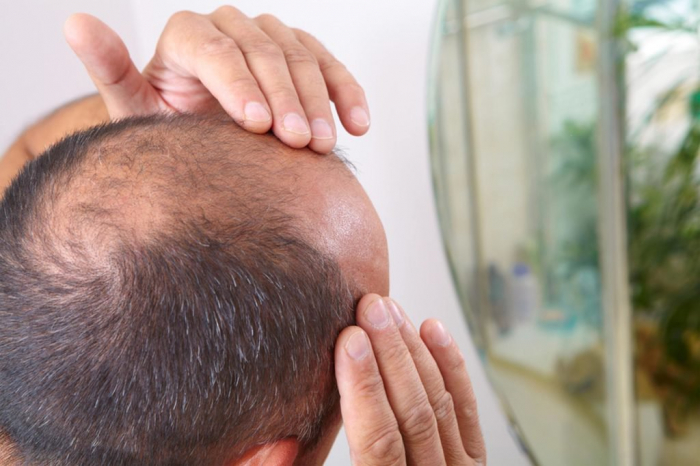In a study on mice, human stem cells were grafted onto a tiny 'scaffold' which was then implanted under the skin and led to hair growing normally.
The work has been described as a 'critical breakthrough' which could help millions of people who suffer from baldness for reasons such as age, genes or illness.
Past tests had trialled a similar method but not been able to control the hair growth, which researchers this time managed to achieve.
A company in the US, Stemson Therapeutics, has already committed to developing the technology which experts hope to move onto testing on people.
Scientists from Sanford Burnham Prebys Medical Discovery Institute revealed their findings at the International Society for Stem Cell Research (ISSCR) conference in Los Angeles on Thursday in Los Angeles.
'Our new protocol described today overcomes key technological challenges that kept our discovery from real-world use,' said Dr Alexey Terskikh.
'Now we have a robust, highly controlled method for generating natural-looking hair that grows through the skin using an unlimited source of human [stem cell]-derived dermal papilla cells.
'This is a critical breakthrough in the development of cell-based hair-loss therapies and the regenerative medicine field.'
In trials scientists grafted human stem cells on mice cells and attached them to tiny scaffolds to control the direct of hair growth and help them integrate into the skin.
Those scaffolds were then placed under the skin of mice and hair emerged through it.
The technique works by using cells called dermal papillae, which resides in the hair follicle and controls hair growth, thickness and length.
The dermal papilla cells are derived from induced pluripotent stem cells (iPSC) which 'act like embryonic stem cells from normal adult cells', according to the Morning Call.
In 2015, Terskikh successfully grew hair underneath mouse skin using those stem cells but without any control of the growth.
Now the refined protocol controls how much hair is grown and in what direction.
The more advanced process involves creating 3D biodegradable scaffolds – made from the same material as dissolvable stitches – with mouse skin cells combined with human dermal papilla cells and placing them under the skin of mice without body hair.
When the biodegradable scaffold disappears, all that's left is healthy hair growing as normal.
Now scientists are working to apply the process to humans combining human iPSC-derived epithelial and dermal papilla cells to grow hair.
This process is different from others because human iPSCs could provide an unlimited supply of cells and can be derived from a simple blood draw.
'Hair loss profoundly affects many people's lives. A significant part of my practice involves both men and women who are seeking solutions to their hair loss,' said Dr Richard Chaffoo, a plastic surgeon who founded La Jolla Hair MD and is a medical adviser to Stemson Therapeutics.
'I am eager to advance this groundbreaking technology, which could improve the lives of millions of people who struggle with hair loss,' he added.
Stemson hopes to grow hair for customers using their own iPSC cells.
Because these cells come from someone's own blood, they're likely to be accepted by their immune system.
The company's long-term goal is to provide transplants made from cells taken from other donors, allowing hair to be grown in advance and more affordable.
The Daily Mail
More about: baldness
















































